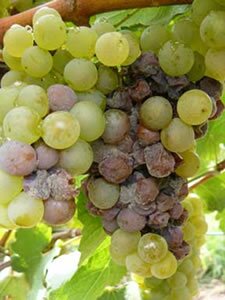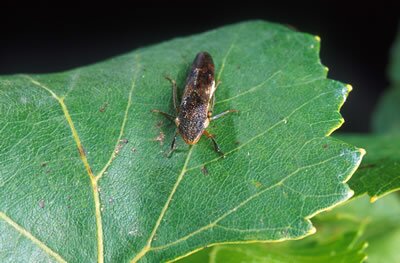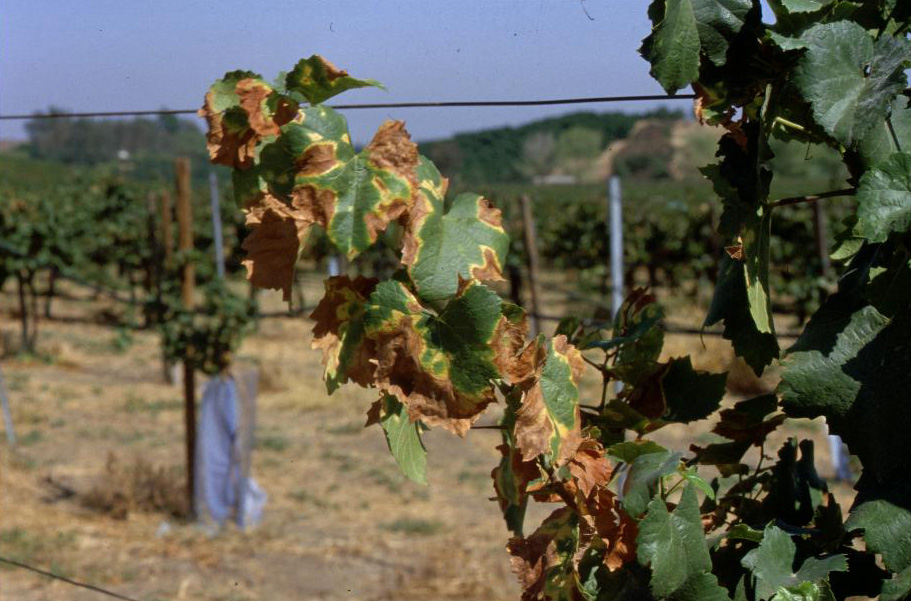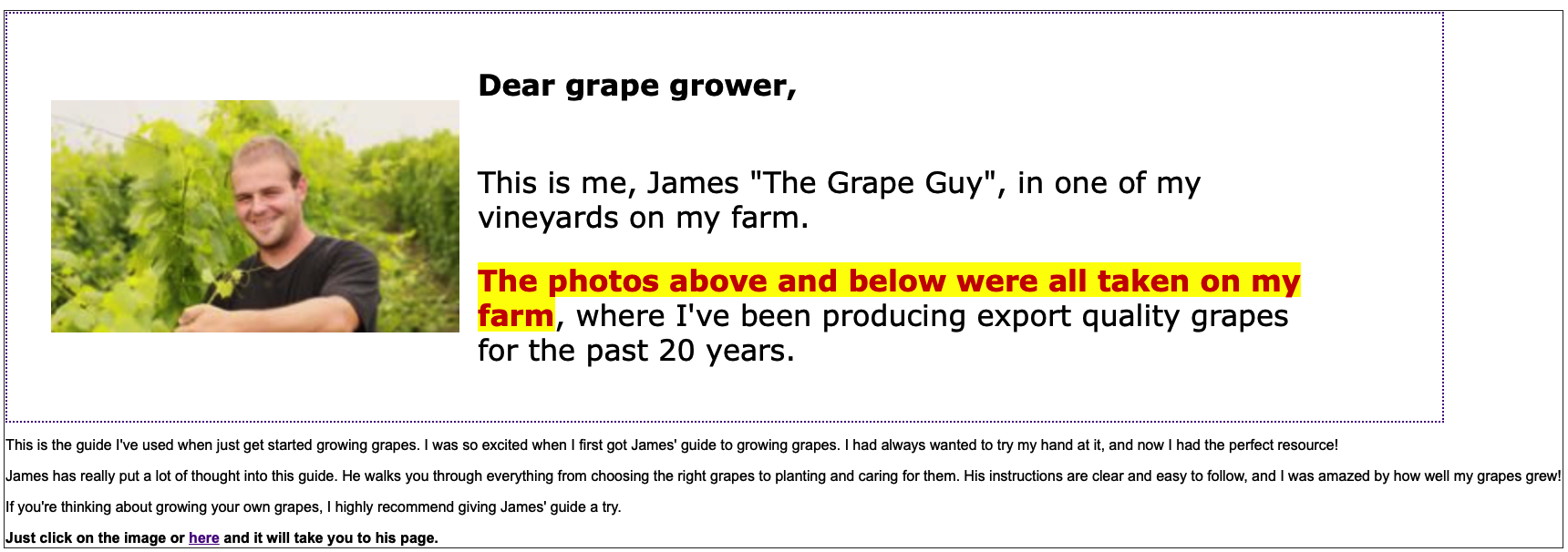To me disease and pest control is probably the least interesting subject regarding grape growing. Yet if you don’t get this part right you’ll just be spinning your wheels.
Diseases:
Seriously, it does not matter if you have a small backyard project or a larger scale vineyard you will be faced with these less than pleasant elements of nature that you will need to know how to deal with.
But don’t worry, it’s very easy if you put the following disease and pest maintenance plan into action.
Even more, you should consult local agricultural departments and fellow grape growers in all aspects of canopy management, disease and pest control.
Regions vary greatly in disease and pest issues. A major problem in one area may not exist in another. Local knowledge will help you tremendously.

The two most effective means of disease control are good canopy management and preventative fungicides treatments.
You will need to use fungicide on a regular basis and it should be done in a preventative maintenance manner. Waiting until fungus appears is usually too late.
Be sure to visit the educational sites I reference later in the fungus and insect sections. They are chalk full of healthful information. This information is an easy read short and to the point with excellent images. Spend a few minutes to an hour on these sites and you’ll practically be an expert.
Canopy management insures a uniform vine structure. The canopy includes all the stems, leaves and fruit clusters that have grown from your two main canes.
Basically canopy management is the thinning and positioning of leaves, stems and fruit clusters during the summer. Positioning includes spacing shoots and fruit clusters amongst your catch wires so that all have equal exposure to sunlight and air flow.
Removing fruit clusters is an emotional experience but can help produce significantly higher wine quality.
Wine that has been produced from grapes at different stages of ripeness will be inferior to that produced from well managed canopy systems. The more sunshine and air flow that is allowed to penetrate your vines the less likely you will encounter fungus diseases.
Thinning:
- remove shoots that are growing downward
- remove shoots from excessive areas of vine density, a general rule of thumb is to have two to four shoots per foot of trellis
- remove shoots that are not bearing fruit, unless they are being retained for possible cane renewal
- remove shoots that have emerged from the trunk base, unless they are being retained for possible cane renewal
- remove excess leaf growth in fruiting zones so that grapes can dry easily and have good sun exposure
Each shoot should contain no more than one grape cluster at an average size of 5-8 ounces. An average size cluster needs approximately ten to fifteen leaves for proper ripening. If your grape clusters are small you can get by with two per shoot. For uniform results all shoots should have approximately the same amount of leaves.
Positioning:
In the growing season use twine to insure a uniform canopy by securing the shoots evenly and upwardly to the catch wires. Again, position all shoots and fruit clusters for equal exposure to sunlight and air flow. Be sure to position fruit clusters so that they are not touching one another.
Fungus:
Powdery Mildew: Grape vines infected with powdery mildew display white powder-like splotches on leaves, stems and grapes. Powdery mildew is experienced worldwide. It can grow well in both wet and dry regions. It can kill leaves and defoliate the vine.
Grape quality suffers when leaves are unable to perform proper photosynthesis. A well managed canopy and regular sulfur spraying will prevent most powdery mildew occurrences. Spray every ten days when shoots reach 10″ in length, continue up until thirty days before harvest: More on Powdery Mildew, Cornell University
Downy Mildew: Symptoms include light green to yellow spots scattered across the leaf. These spots appear greasy and are commonly referred to as oil spots.
The biggest concern for downy mildew is leaf infection. The fungicides Copper, Captan, and Mancozeb can be sprayed every ten days and is generally mixed with sulfur. Please read the labeling and do your research, local restrictions may apply: More on Downy Mildew, Iowa State University
Black Rot: Symptoms include brown circular lesions on infected leaves. Left untreated it can destroy an entire grape crop. The biggest concern for black rot is the infection of young grape clusters.
Infected berries first appear light brown and then turn to near black as masses of black pycnidia develop on the surface. Again, Copper, Captan, and Mancozeb are the most protective fungicides. For application follow the downy mildew recommendations. Please read the labeling and do your research, local restrictions may apply: More on Black Rot, Cornell University
Bunch Rot: Infected berries appear soft and watery. In high humidity regions berries become covered in a grayish growth of fungus mycelium. Tight-clustered grape varieties are most vulnerable to bunch rot.
Canopy management is your most effective tool in preventing bunch rot. Promote good air circulation, sunlight penetration, and uniform leaf development by practicing proper canopy management. Remove leaves around grape clusters so that sunlight and air flow can help dry wet grape clusters: More on Bunch Rot, Ohio State University
Insects:
It’s much easier to correct and control damage caused by insects then that caused by fungus disease. You can evaluate the problem as it develops and determine if damage is significant enough to warrant spraying. Rarely will insect populations be high enough to require insecticides.

Insects feed on buds, leaves, and fruit. The most damaging are those that feed on fruit because resulting rot can spread throughout the entire cluster.
Use insect specific insecticides to eradicate insects you have identified as damaging to your vines. Certain insects are actually good for your vineyard and you don’t want to destroy them because they feed on mites and other problem insects.
Get local agricultural advice when seeking solutions for insect infestations. There’s tons of good images and information regarding insect eradication online. Search by your state for local information. Some of the most common and damaging insects are discussed and pictured at the following education sites:
More on Grape Insect Pest, University Of Minnesota
More on Grape Insect Pest, University Of Kentucky
Every state monitors insect populations most of which can easily be found online.
Other Pest:
In some areas birds can be a big problem. Their pecking of grape berries can easily initiate rot damage. Scare devices are helpful but can be annoying to neighbors if they are sound related. In some extreme cases netting may be your only solution. Voracious birds can devour a crop in a short period of time.
Deer, bear, kangaroos, raccoons just about every animal loves grapes. Deer the largest animal problem for most grape growers can be fenced out. Fence designs vary depending on what animal you are having problems with. Repellents such as hot sauce and pepper are effective in areas where problems are moderate. Again local knowledge is your best tool.


